PG Tips -The Best of 2011:
An International Perspective
Once again for the fourth year in a row, I’ve corralled some of my international friends and correspondents, many of them contributors to 1001 Comics You Must Read Before You Die, to reveal what they consider one or more of the very best comics published during 2011 by creators and publishers from their own countries. It’s easy to forget that there is a bigger, wider world of comics out there than Anglo-American or English-language material. So let’s head off around the planet, from Argentina, Australia and Austria, via Belgium, Denmark, Finland, Italy and Japan, to Portugal, Russia, Serbia, Slovenia, South Korea, Spain and Sweden, to discover the amazing comics being produced worldwide…
ARGENTINA - AUSTRALIA - AUSTRIA - BELGIUM - DENMARK - FINLAND
ITALY - JAPAN - PORTUGAL - RUSSIA - SERBIA - SLOVENIA
SOUTH KOREA - SPAIN - SWEDEN
Argentina
Selected by Juan Manuel Dominguez
Juan Manuel Dominguez wanted to be a superhero. Now, the Batman-Gorey lover drowns his dreams of saving the universe with comics and film criticism - the Clark Kent answer to reality - and believes his folks and friends contribute to the most super factor of his professional and non-ultra-powered life.
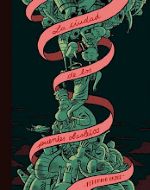
La ciudad de los puentes obsoletos
[The City of Obsolete Bridges]
by Fede Pazos
Editorial Común
My Best of the Year? Not exactly the Best. But, yes, the ‘best’ in an absolute, dazzling sense: Fede Pazos punched a hole through Argentinian comic scene. Pazos is a natural illustrator - his drawings feel as crafted as if made on a computer, his art seems like a drawing made by an H3 pencil directly on the screen. A not-still-quite-felt nonsense hit, a micro-earthquake, that has become, finally, the ‘best’ way to make a point: we need liberty. We need free comics, with no Drawn & Quarterly agenda (no disrespect, dear D&Q: everything, as good as it is, always seems to be made as if ‘For Export’ for either the American or European publishing market). La ciudad de los puentes obsoletos is mind-flowed anarchy, with antique colors, in a Seth way, also sharing his strong line, and a strange everything-can-happen mixture of David Lynch, Hollywood, Tom Waits, Disney and Lewis Carroll. His lack of pretension is as big as his Wizard of Oz fantasy/ Pazos has constructed, out of his own book, a bridge, a new one, which can perhaps lead to anywhere. And that’s definitely for the ‘best’.
Australia
Selected by Philip Bentley
Philip Bentley is a writer and editor who produces Word Balloons, a journal on Australian comics. Over the years he has also written, edited, published and retailed them.
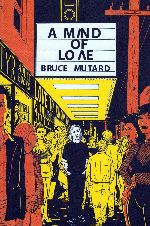
A Mind of Love
by Bruce Mutard
Black House
A coming-of-age story of sorts, A Mind of Love tells the tale of Brian, a callow adult bookstore employee with a crush on Nancy, the waitress where he has lunch. Through a series of events, the distance between them collapses and Brian learns some hard truths about the difference between reverie and reality. Originally serialised in Mutard’s 1990s comic Street Smell as ‘Love to Know You’, this edition brings together a rewritten and retouched version of those three chapters and adds a further two episodes produced more recently. These follow Brian into greater maturity and make some pointed observations on the commodification of sex in the modern age, bringing the work closer in tone to Mutard’s more recent books, The Sacrifice and The Silence (Allen & Unwin, 2008 & 2009 respectively).
Austria
Selected by Sebastian Broskwa
Sebastian Broskwa is the manager of the Viennese comics emporium Pictopia.

Alte Meister
adapted by Nicolas Mahler
Suhrkamp
This is a comics-adaptation of a literary novel by Thomas Bernhard, one of Austria’s most famous novelists, whose work caused quite a stir when it came out and was perceived as controversial. Thomas Bernhard wrote novels and also theatre plays. Nicolas Mahler, Austria’s best-known cartoonist, has adapted one of Bernhard’s key works, Alte Meister (which means roughly translated ‘Old Masters’, but the meaning is more classic/canonical masters). The story is about a man who goes to the art history museum of Vienna several times a week, out of habit, always sitting in the same room looking at one painting and thinking about art and his life. The funny thing is the guy hates all the works being displayed at the museum, he has no love for the masters of old and their works. He refers to them as hacks, that they only did work for hire, for the state or for the church. The book is essentially one big rant inside the guy’s head, very entertaining, dark but funny, and he slaughters a lot of Austrian holy cows.
Nicolas Mahler adapted this book where very little external action is happening into a stunning comic. Nicolas changed his approach to page composition. The whole story unfolds mostly in one-page panels that have been done in new and creative ways. It does not read like a static series of one pagers but comes to life as a dynamic reading experience. The whole book shows a new way of doing comics taking full advantage of the page size but still leaving plenty of empty space, freely arranging text captions within the pages. The visual style is incredibly minimal and the drawings require you to think about them quite a bit, as a lot of the drawings seem ‘unfinished’ and very suggestive. Mostly you see a guy sitting in a museum room looking at a couple of paintings and a ward and that’s it - all reinterpreted through Nicolas’ drawing style. But the comic also goes into the inner subjective view of the protagonist which is where things get really interesting. He only uses one colour - yellow - and this very sparingly throughout the book. It’s a strange yet highly readable book and I recommend it to just about anyone interested in reading graphic novels. Alte Meister has also met an incredible commercial success and it has already been twice reprinted within two months, with a fourth edition pending.
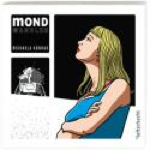
Mondwandlert
by Michaela Konrad
Luftschacht
Mondwandler(‘Moonwalker’) is a Pop Art poem by Austrian cartoonist Michaela Konrad, published by the wonderful Viennese publisher Luftschacht. Michaela Konrad’s style is influenced by the Pop Art approach of Roy Lichtenstein and here she uses a very clear, very sensual and yet very ‘cool’ line. The ‘story’ is highly poetic and suggestive: we see a sexy blonde woman on the surface of the moon seeing spaceships from earth approaching, observing the astronauts at work, touching the objects they leave on the surface of the moon, looking back at earth. Plus we see spaceships landing and astronauts walking around or driving around. The book is highly researched and you get to see a lot of cool space travel equipment. The images are of a very rare and somewhat austere beauty. Very cool, blue. All the texts in the book - there is no dialogue in it - are quotes from actual, real astronauts that really have been to the moon talking about the experience and how it profoundly altered their worldview and perception. The great thing about the book is the incredibly spacey atmosphere: it really transports you there and recreates the experience of walking on the moon - feeling weightless, seeing the light on the moon under a black space sky, the earth as seen from the moon…. It’s the comic equivalent of Brian Eno’s music, which is high praise indeed.
Belgium
Selected by Gert Meesters
Gert Meesters has a PhD in Dutch linguistics from the University of Leuven and teaches at the University of Liège, Belgium. He also works as a comics critics and journalist, and writes about comics for the Flemish news-weekly Knack.
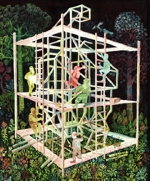
De liefhebbers
by Brecht Evens
Oog Achtend
De liefhebbers can be seen as a better version of The Wrong Place, Evens’ acclaimed previous book, that already got him the Prix de l’Audace in Angoulême and the Willy Vandersteen prize for the best comic in Dutch at the tender age of 25. This time, he tells the story of a bad artist who is invited to an art fair in a small village. He is hailed by the locals as if he were a rock star and starts behaving accordingly. Evens’ art is very dense on some pages and especially the portrayal of nature and buildings adds a new characteristic to his colourful painted style. The book is to be published in June in English by Drawn & Quarterly and Jonathan Cape as The Making Of.
Denmark
Selected by Matthias Wivel
Matthias Wivel is an art historian with an MA from Columbia University and a Ph. D from the University of Cambridge. He is currently working as a curatorial assistant in the master drawings department of the Morgan Library, New York. He writes comics journalism and contributes to the weblog Metabunker.
This year, Danish comics culture is seeing the revival of the Ping awards, an industry award last given back in the Nineties. Once a hall of fame prize, it is now awards cartoonists in five categories in the manner of the Angoulême Fauves awards. This year focuses on comics published in 2011, and five Danish comics have been selected in their particular category. Although I haven’t participated in the nomination process, I am involved in organising the event and am part of the jury, so I’m biased, but I can say immediately that it’s going to be hard to find a winner. Here are the five nominees - for my money not just the five best Danish comics of last year, but the strongest showing in Danish comics for a long time:
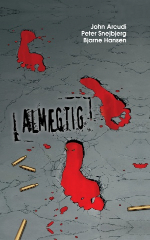
Almægtig
[A God Somewhere]
by John Arcudi and Peter Snejbjerg
G Floy Studio
Technically a Danish edition of the American edition by DC/Wildstorm, Almægtig is drawn by Denmark’s hardest-working man in mainstream comics showbiz, so let’s call it Danish too. Snejbjerg finds in Arcudi’s smart script about an ordinary man who gains godlike power a perfect match for his sparse chiaroscuro style. Arcudi’s elegant mix of human incident and big ideas challenges Snejbjerg most of the time to work with nuance and precision in place of the pyrotechnics that are otherwise the stock in trade of American genre comics. An intelligent and unpretentious take on that most hackneyed of genre exercises, the “realistic” superhero story, congenially visualised.
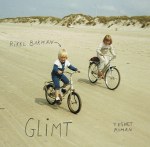
Glimt
[Glimpses]
by Rikke Bakman
Aben Maler
A beautifully realised suite of childhood recollections woven into the narrative framework of a single summer’s day spent at the Danish west coast when the author was six. Evocatively drawn in colored pencil, Glimt conveys a gripping sense of being there, as a child, with the glimpses of the adult world beyond the curve of age.
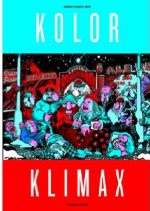
‘Nostalgia’ in Kolor Klimax
by Johan F. Krarup
Fantagraphics
Full disclosure: this short comic appears in an anthology edited by yours truly, but that is not Krarup’s fault! ‘Nostalgia’ documents Krarup’s visit with a well-known Danish collector of comics and Disneyana at a time when his life is coming apart after a divorce. A keen observer and deft writer, Krarup here presents his most affecting human portrait yet, framing the protagonist’s personal crisis in terms of his collector’s yen for order.
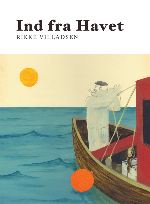
Ind fra havet
[Back from the Sea]
by Rikke Villadsen
Aben Maler
This surreal seafarer’s yarn does not conceal its epic ambition to fathom the mysteries of parenthood and mortality, but couches it in humor alternately delirious and down-to-earth. Villadsen mixes overwrought Freudian symbolism with situational comedy and flashes of occluded, yet felt, autobiography to fashion personal mythology on the page that transcends its obvious inspiration in Anke Feuchtenberger’s uncannily smudged pencil-and-charcoal rendering to become a compelling statement on life in its own right.
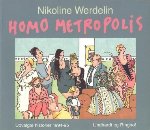
Homo Metropolis
by Nikoline Werdelin
Politiken
One of Denmark’s greatest cartoonists of the last twenty-five years, Werdelin still retains her sharpness. A couple of years ago, when she returned to her long-running daily strip after a hiatus, she adopted a looser, sketchier approach that alleviates certain of her weaknesses as a draughtswoman and gives the strip a liberated feel unseen in its earlier iterations. It still delivers the same scabrous social satire though - wickedly funny because it’s true.
Finland
Selected by Harri Römpötti
Harri Römpötti is a freelance Helsinki-based journalist specialising in comics, cinema and music. With Ville Hänninen, he co-wrote the book Päin näköä, exploring contemporary Finnish comics. A related exhibition entitled Eyeballing: The new forms of comics presents the 14 featured artists at Kiasma, Helsinki from March 9th to September 9th.
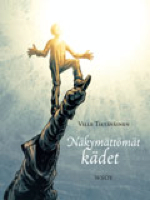
Näkymättömät kädet
[Invisible Hands]
by Ville Tietäväinen
WSOY
Näkymättömät kädet is the biggest media breakthrough in the history of Finnish comics. It feels like literally every publication in Finland has printed a rave review of the book. It was one of the year’s biggest events in the whole publishing sector. Tietäväinen worked on his 200+ page book for five years. It tells the story of Rashid, an illegal immigrant to Spain. Tietäväinen draws in a realistic style with enormous attention to perspective and other details. To start with he took two research trips to North Africa and Spain to familiarise himself with the subject matter. All that took a lot of labour and time. The result, however, is an effortless read. The impressive, only slightly melodramatic, story is told with a touching portrayal of the fully realised main character.
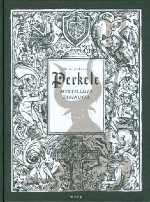
Perkele & Santala
[Devil & Santala]
by M. A. Jeskanen
WSOYi
The most impressive and surprising debut of the year comes from a previously practically unknown artist. M. A. Jeskanen’s Perkele is a collection of short stories that takes its inspiration from the history and folklore of Finland. In his stories Jeskanen adapts those elements to the horror genre in a fresh and original way. Divided into two books, the work spans over 300 pages. The historical background feels convincingly realistic. Jeskanen’s slightly rough black-and-white brush drawings fit the subject matter perfectly, evoking associations with the style of medieval illustration.
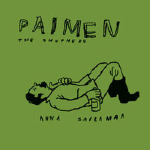
Paimen
[Shepherd]
by Anna Sailamaa
Huuda Huuda
Paimen is also a debut, although Sailamaa has already made herself a name with her short stories. The tale takes place during a little over 24 hours in a small town in northern Finland. The main character is a young man working in a bakery. Sailamaa evokes impressions in a subtle manner. The point of view is most of the time the main character’s but a lot of the important small events and characters are on the peripheries of the panels - and of the attention of the character. Sailamaa’s loose brush lines reveal her enjoyment of drawing, especially in the images of the details of nature. It might be a rather demanding reading experience but is certainly rewarding.
Italy
Selected by Matteo Stefanelli
Matteo Stefanelli is a scholar, curator, and media consultant based in Italy. His latest book is La bande dessinée: une médiaculture, with E. Maigret, and published by Armand Colin. He also runs the blog Fumettologicamente
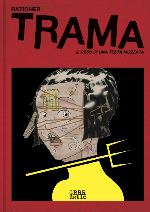
Trama
[Plot or Texture]
by Ratigher
GRRRzetic
Quite a simple horror story, at first sight. A young couple preparing to go out for a party, but their plan is interrupted by the appearance of a scary monster: a ‘mud kid’, ugly as hell, mysteriously threatening, anti-capitalist and party-hungry. But the point here is less on the story than on storytelling, and less on contents than on the reading experience. Everything stands in the title Trama, an ambiguous Italian word meaning both ‘plot’ and ‘texture’. And here is the core of Ratigher’s first book: a strange journey through the narrative, via a brilliant and unique storytelling device. The book follows the young couple’s trip to the party, and their attempts to escape the ‘mud kid’ menace. But each chapter ends in a flash-forward scene: the chapter’s last page is exactly the same as the first page from two chapters later (after page 10 we have page 24, then the story continue from page 12 to page 22; then we read page 34, and we resume and go from 24 to 32; then we see page 44,... and so on).
Close to Charles Burns’s disturbing atmosphere, there is a deep sense of imminent tragedy (a rape? a slaughter? from outer space?), increased by the repeated jump forward into the near future, always bloodier. The result is a troubling read, offering an unusual experience of suspense. A brilliant ‘texture of pace’, without a clear end: the last page (99) is anticipated by a flash-forward (page 102 is after 88), and the mystery of the narrative remains unsolved. Maybe the menace is gone (has ‘mud kid’ disappeared?). Or maybe the slaughter finally happened, at the party’s house, but thanks to the most unexpected killers: the couple themselves.
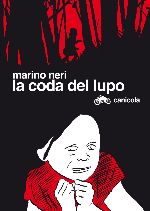
La coda del lupo
[The Wolf’s Tail]
by Marino Neri
Canicola
This is the story of a young girl growing up in a miners’ village. The atmosphere is soaked in ancestral fear, driven by religious superstitions and paganism: the villagers believes that, hidden in the woods, lives a woman with a wolf’s tail. Elga is an orphan who resides in a priest’s home and dreams about her mother, devoting herself to Saint Agatha as her very confident heroine, “because saints are not afraid of anything”. In her coming of age she meets a young boy, discovers his first kisses, and tries to learn something about that mysterious ‘wolf-woman’ who finally will reveal her untold scandal to the girl. Marino Neri’s second book is an initiation story with the flavour of ancient oral histories, where nature deals and clashes with religion. In pages of intense black and lighting white, his sensual brushline produces a floating appearance of figures and things. Maybe it is the echoing of some lost meaning, returning to us through comics, from the very distant, and unintelligible, land of drawing.
Japan
Complied by Tatsuya Seto
Tatsuya Seto is a Japanese manga critic and CEO of publisher G.B. Company. The founding editor-in-chief of manga magazine comnavi, he has written numerous books including The Ten Men Behind Great Comics, The Giant Robots Reader and Gakuen Manga Reader.
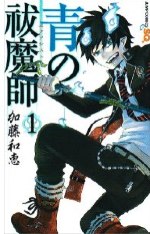
Ao no Exorcist
[Blue Exorcist]
by Kazue Kato
Shueisha
Teenager Rin Okumara, who was raised by Father Shiro Fujimoto, discovers that he is the son of Satan, born from a human mother. After Father Shiro Fujimoto dies protecting Rin from Satan’s attempts to take him away to the demon realm, Rin decides to become an exorcist to carry out revenge on Satan. The manga Ao no Exorcist was adapted into a television anime series and is due to be adapted into an animated film for theatrical release. First serialised in Jump Square in 2009, seven volumes have been published to date, with a total of over 7 million copies sold.
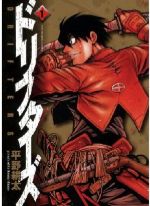
Drifters
by Kouta Hirano
Shonen Gahosha
On his deathbed after the Battle of Sekigahara, great warrior Shimazu Toyohisha is transported into another world where he meets other warriors from different times, places and periods to be part of a group called ‘Drifters’. The group throw themselves into chaotic battles against another group called ‘Ends’ who want to take over the world. This historical fantasy ranked 2nd in the 50 best manga recommended by sales clerks from 3,000 bookstores across Japan in a 2011 study by Otana Fami Magazine. First serialised in Young King Ours in 2009, two volumes are out so far.

Chihayafuru
by Yuki Suetsugu
Kodansha
The story centres around Chihaya Ayase, a schoolgirl who has provided support for her sister’s modeling career. However, upon meeting new transfer student Arata Wataya, a talented player of the Japanese card game Karuta, Chihaya is told that she has the potential to become a top player, and so begins to pursue her dream of becoming Japan’s best Karuta player. First serialised in Be-Love in 2007, fifteen volumes have been published to date, with a total of over 5 million copies sold. Winner of the 2011 Kodansha Manga Award for Shojo Manga.
Portugal
Selected by Pedro Moura
Pedro Moura is a Portuguese PhD student researching trauma and comics. He writes mainly for his own blog but has published several articles and worked as a teacher, curator, translator, and conference director in comics..
As in the last few decades, comics publishing in Portugal has been quite difficult and within a weak marketplace. Still, there are the odd publications by Portuguese artists among the more commercial fare of translated international comics. One must also pay attention to smaller publishing efforts, including, of course, the many fanzines, authors’ editions and small presses. My choices, as always, privilege auteur works, if you will, rather than more traditional approaches to comics, which frankly follow tired clichés or formulaic art. I was privileged enough to have curated in the past year a exhibition of Portuguese comics for a major contemporary art museum in Lisbon (Museu Berardo), and I am sticking to its agenda: the perspective that Portuguese comics have produced more interesting artists exploring new facets of comics as an art medium than those who explore it in a more traditional way (even if they do it in a very competent and professional way, as seen by the penetration of some Portuguese artists into the North American comic-book industry).
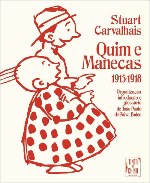
Quim e Manecas
[Forbidden Art]
by Stuart de Carvalhais
Tinta da China
I should start with a new reprint of a national classic, one that ought to be known globally for its role in the formative mass of comics as a modern medium. Stuart de Carvalhais (1887-1961) was an artist on several fronts, but he also dedicated himself to comics passionately, and Quim e Manecas is his best known, and more successful series. Featuring a pair of hoodlums, following an already established staple of comics in his time, Carvalhais explored many new composition strategies, an expressive use of color and of the speech balloon in European comics that would become more regular somewhat later. But its publication started in 1915, so this is ten years before Alain Saint-Ogan’s Zig et Puce in France, and even more before Hergé‘s Tintin in Belgium. Of course, his style and narrative changed over the years, but this book focuses on Stuart’s own work, and its best phase, until 1918. His approach was impromptu, and he even dropped the speech balloons early on, but he should in any case be seen on a European level, if not at a global level, as a precursor of several things, including what would later be called the ‘ligne claire’), something not that usual for a peripheral country like Portugal. This is a comprehensive anthology of these strips, with a long introduction and other supporting texts by Portuguese comics researcher João Paiva Boléo.
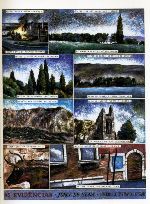
Um lugar nos olhos
[A Place in the Eyes]
by Luís Manuel Gaspar
Ao Norte
The inclusion of this book in the comics canon may not be consensual, but comics are quite a large field today. Gaspar is actually a professional illustrator and also a published poet, and this is an anthology which gathers his many adaptations of major Portuguese poets to the comics form. Exploring the many possibilities of the combination of images and poetic words, and presenting them through judicious, significative and knowledgeable of comics’ structures, these poems are re-presented in a wonderful manner, at the same time that Gaspar presents new possibilities in the expressivity of the comics form itself. These works were published originally in a number of literary magazines, and therefore were not known to more traditional comics fans. This edition, although from a small publisher, attempts to contribute to a larger spectrum of what comics can be, at least in my country. For more info, see my blog.
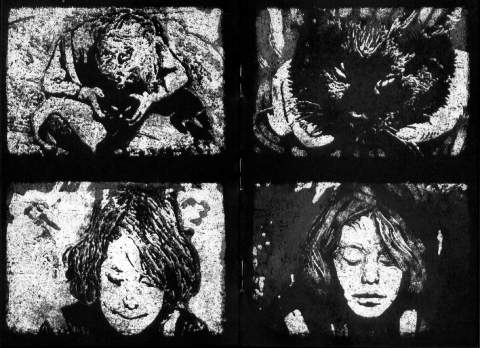
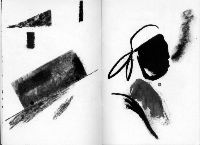
O Filme da Minha vida
[The Film of My Life]
by Luís Henriques and Pedro Nora
Ao Norte
Ao Norte, the publisher of the previous book, has a collection edited by Tiago Manuel, a major artist who works in a graphic realm at the meeting point between illustrated books, artist’s books and contemporary comics. Several artists, from a comics background or otherwise, are invited to choose a film of their liking and transform its subject matter into a small 32-page comics-style booklet, as open-ended as possible in its structures and styles. To call them ‘adaptations’ fails to do them justice, considering the many avenues the artists choose: some follow the general plotline, others choose a particular episode; some prefer to recreate some of the visual matter, others transfigure the original source into a wholly different thing. At the same time, these books are both wonderful transmedial exercises and autonomous projects. In any case, they always come up with remarkable, intriguing and thought-provoking results. These two examples are (large image above) Luís Henriques’ take on Victor Erice’s 1973 Gothic-whimsical movie El espíritu de la colmena, an allegory about cinema, friendship and the horrors of the Guerra Civil, and (smaller image, above right) Pedro Nora’s symbolic transformation of the mordacious human comedy by poète maudit João César Monteiro’s 2003 film Vai e Vem. For more info, see my blog.
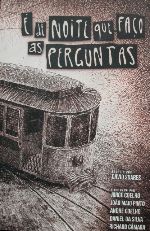
É de noite que faço as perguntas
[It’s The Night Which Asks The Questions]
written by David Soares & drawn by João Maio Pinto, Jorge Coelho, Richard Câmara, Daniel Silvestre da Silva, & André Coelho
Saída de Emergˆncia et. al.
This is actually an institutional commission: to commemorate the 100th anniversary of the Portuguese Republic, David Soares, a comics-artist-cum-literary-writer, was invited to pen a story that would both retell some of the events that led to the fall of the Monarchy and the emergence of a Republican regime, but also its inheritance. Considering that from 1926 to 1974, Portugal lived under a dictatorial regime, Soares chose to place his character’s reminiscences within that period without freedom so that the contemporary reader can understand the value of republican principles. Drawn by five different artists, each chapter follows a particular visual style, which ends up by rendering the events in different lights. A project such as this could have fallen into a very poor pedagogical pattern of storytelling, but Soares turns it into a complex network of references, making its plot at the same time universal and very individualised. For more info, see my blog.
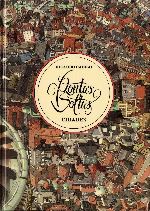
Pontas Soltas
[Loose Tips]
by Ricardo Cabral
Asa
Being a more traditional publisher, it comes as no surprise that Asa sticks to its regular authors. Cabral has put out a series of books based on his voyages, first to Israel and Kosovo, and this one aggregating several trips. His style is quite peculiar, working with drawings done on the spot or based on photographs, and then using the photo’s colours and textures via digital means to ‘complete; the line drawings. These are travelogues, but they’re usually more about the people he meets and his own inner thoughts and experiences than a mere repository of what he saw or ate or whatever. Sometimes fictions play a strong part in his narratives, throwing the reader off-balance when fantasy seeps in. For more info, see my blog.
Russia
Selected by Dmitry Yakovlev
Dmitry is the director of the Russian comics festival, Boomfest, which has been running since 2007.

Zapretnoe iskusstvo
[Forbidden Art]
by Victoria Lomasko & Anton Nikolaev
Boomkniga
We don’t have a lot of comics by Russian artists; last year maybe 4 artists’ books and 4 anthologies were published. Zapretnoe iskusstvo) is a graphic reportage which covers the trial of the organisers of the exhibition Forbidden Art 2006, Andrey Erofeev and Yuriy Samodurov. The trial has been initiated by the ultraconservative group Narodniy Sobor. All the materials for the project have been collected by the authors themselves during the trial and reflect the events not only inside the courtroom but outside of it as well. All the images were created by Victoria Lomasko. During the trial, the reports were published in the author’s blogs and in the press. One of the reports, ‘The Defense Witnesses Strike Back’, was nominated for the Kandinsky Award in 2010. You can also read this big article about it in the Saint-Petersburg Times.
Serbia
Selected by Zivojin Tamburic
Zivojin Tamburic is a long-time reader, collector, critic and historian of comics from Belgrade & London. He is also editor of the graphic novel collection from Omnibus.
Despite difficult economic conditions, a small market and lack of support from Ministry of Culture, the enthusiastic publishers from Serbia had one of their best years in 2011. They published many domestic and international titles. Devoted comic readers, in an always strong comic scene in Serbia, are happy about the current situation, even though the graphic novels are quite expensive due to small editions of usually 500 copies. However, there is a big question mark how long the publishers can continue without making profits and without support from the wider cultural community. The following is just a selection of the most interesting domestic titles:
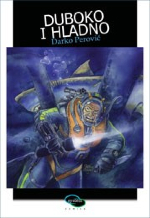
Duboko i hladno
[Deep and Cold]
by Darko Perovic
System Comics
This is a compilation of several stories that Darko Perovic did for Spanish publishers in the early Nineties, looking for work and survival away from the war in Yugoslavia. The works are compellingly defined and strong, about the eerie underwater experiences of professional divers.
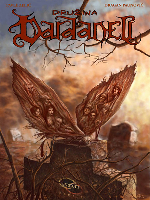
Druzina Dardaneli
[Team Dardanelles]
by Pavle Zelic & Dragan Paunovic
System Comics
A promising, first instalment, of this Serbian version of The League of Extraordinary Gentlemen. A group of positive characters from literature and folk stories are fighting against a group of negative characters in the 19th century in Serbia. The Dardanelles is the name of the narrow sea passage in Turkey, between the Aegean Sea and the Sea of Marmara, but also the name of the popular ‘kafana’ (restaurant) in Belgrade at the time of the story.
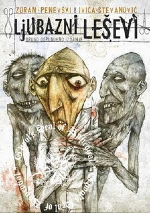
Ljubazni lesevi
[The Pleasant Corpses]
by Zoran Penevski & Ivica Stevanovic
Komiko
An experimental work, but beautifully drawn and with a coherent story. This is probably the right way for underground comics to win over a wider audience.
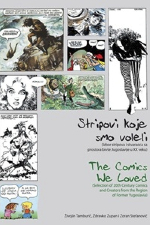
Stripovi koje smo voleli
[The Comics We Loved]
by Zivojin Tamburic, Zdravko Zupan & Zoran Stefanovic
Omnibus
A lexicon about comics in ex-Yugoslavia in the 20th century, which I co-edited. The book provides panels and information for about 400 comics, from about 400 authors (artists, script writers and writers), partially in English. There are about 1,000 citations from 180 critics and a lot of valuable information, including detailed literature and index. The book won The Publishing Achievement of the Year award at the Belgrade Book Fair in October 2011. This was a great success, not only for the authors and publisher, but for the comic scene and comic fans in Serbia as well. You can read the Foreword written by Paul Gravett here.
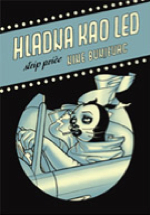
Hladna kao led
[Ice Cold Lady]
by Nina Bunjevac
Omnibus
Nina Bunjevac is a new, delightful, female voice in Serbian comics. Her characters are dark and miserable, on the brink of decent existence. Her style consists of painstaking, illustrative, black-and-white panels, which makes her a genuine and promising author for the future. Conundrum Press in Canada are translating it as Heartless this September, with advance copies available at the Toronto Comic Arts Festival in May.
Slovenia
Selected by Iztok Sitar
Iztok Sitar is an author of comic books, contributing to Stripburger among others, and he also deals with the theory and history of comics. In 2007 he published The History of Slovenian Comics: 1927-2007 which is the first ever comprehensive review of Slovenian comics. In 2011 he participated in the exhibition Drawing in Slovene Comics in the City Art Gallery of Ljubljana
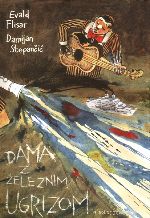
Dama z zeleznim ugrizom
[The Lady with an Iron Bite]
by Damijan Stepancic & Evald Flisar
Vodnikova zalozba
This is a collection of six comics based on short stories by Evald Flisar, who is a novelist and also a travel writer. The latter is evident from comics, since all his stories take place in more or less exotic lands. The common thread to all the stories is the eternal attempt of the human being to escape from the everyday, settled-down life. Stepancic drew each of the stories in a different style that best fits the given situation, which gives the book a special charm and authorial stamp.
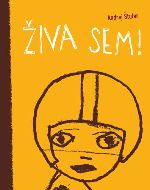
Ziva sem
[I’m Ziva]
by Andrej Stular
Forum Ljubljana
The title of these six stories with the heroine, a girl named Ziva, is a play on words that can mean ‘I’m Ziva’ or ‘I’m alive’ (Ziva means alive for a female in Slovenian). This children’s comic book by the multimedia artist Andrej Stular is generally full of wordplays, and in addition Ziva uses her own language and rhymes to easily communicate with the various human and animal protagonists. Apart from witty dialogues, this comic also exhibits excellent stylised drawings.
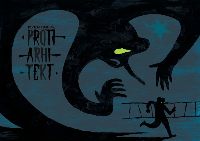
Protiarhitekt
[Antiarchitect]
by Domen Finzgar
Forum Ljubljana
Finzgar’s debut tells the life story of a slightly eccentric architect who explores the mystery of a fictitious biblical star of Balthazar. It speaks on one hand about lies and manipulations, and on the other hand about worshipping knowledge and the arts. The question which accompanies us during the entire reading of this stylishly drawn album is whether the main hero, an architect, is normal or actually crazy. It is up to the reader to decide!
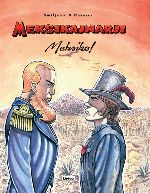
Meksikajnarji 3: Meksiko
[Mexicans 3: Mexico]
By Zoran Smiljanic & Marijan Pusavec
Umco
The third part of a five-part historical saga by Zoran Smiljanic and co-screenwriter Marijan Pusavec tells two parallel stories. The first one is about the fictional Slovene named Anton Brus who in the second half of the 19th century, together with about 400 compatriots, left the then Austro-Hungarian homeland and went to Mexico to be a mercenary and fight for the occupying army of the self-proclaimed emperor Maximilian, the subject of the second story.
South Korea
Selected by Kim Nakho
Nakho Kim is a Korean comics researcher. He writes reviews and columns for book journals and other periodicals, and has worked as the editor-in-chief for the comics critic webzine Dugoboza, curated the special exhibition on Korean comics at the Angoulême Festival 2003. Ten years on Korea will be a guest again at the 2013 Angoulême Festival.
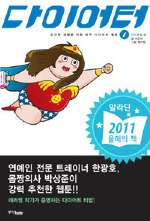
Diet-er
by Neonbi & Caramel
Anibooks
Can comics about an ordinary young woman going on a diet actually be both informative and hilariously entertaining? Surprisingly, it turns out it can. Meet Suzie, a female 20-something bank teller, who realises that obesity is damaging her health. With the help of Chanhwe, a swindler-turned-trainer, she embarks on an epic journey of reforming her eating habits and working out. This is epic to the point of dedicating a parallel storyline to the full-fledged war drama going on between the fat-cell gangsters and muscle-cell residents inside Suzie’s body.

Kittie and White Doggy
by Yoon Pil
GCKBooks
This is the story of a cat and a dog taking all kinds of low-paying manual labour in modern Korea, to pay off the debt left behind by their human owner. The pair work as janitor, pizza delivery, construction helper, among countless others. In a society with weak social security for temporary employees, little respect for manual labour and whole sets of other prejudices towards minorities and have-nots, life is harsh. But there is always hope, as long as there are some people who are in the same boat but who are willing to understand and share what they have with each other.
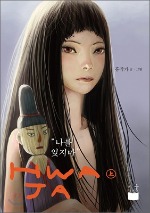
Hwaja
by Hongjacga
Middle House
A small boy ventures into a haunted house where a teenage girl rumored to be a ghost, named Hwaja, lives alone. He becomes close friends with the girl who claims to see dead children. Ten years later, when he returns to that place where he grew up, he encounters Hwaja who literally hasn’t aged a bit and learns there has been a dark plot going on involving pretty much everyone else in town. A beautiful thriller about collective cruelty, coming-of-age and redemption drawn out with haunting grace and excellent pacing.
Spain
Selected by Alfons Moliné
Alfons Moliné is an animator, translator, and writer on the subjects of comics, animation and manga. He is the author of a number of books, including El Gran Libro de los Manga (Glénat, 2002) and biographies of Osamu Tezuka, Carl Barks and Rumiko Takahashi.

Nuevas Hazañas Bélicas - 2 Volumes
[Military Exploits]
by various, supervised by Hernán Migoya
Glénat Spain
Hazañas Bélicas was the title of a Spanish comic book series highly popular in the 1950’s, which mostly featured World War Two-themed stories. In a way, it was Spain’s equivalent to Commando, War Picture Library and other British war-themed pocket comics. Now publisher Glénat Spain (which recently became autonomous and is no longer a branch of French publishing giant Glénat, though retaining the original name), presents its new album series Nuevas Hazañas Bélicas. Under the supervision of writer Hernán Migoya (whose graphic novel Olimpita was reviewed by me on this same site three years ago here), the artists include Miguel Gallardo (a veteran of the Eighties’ Spanish comic scene), Diego Olmos (who drew Dragon’s Knight, a Batman adventure set in Barcelona), José Maria Beroy and others. These ‘New Military Exploits’ differ from the original series in which they offer tales using the Spanish Civil War as a background. So, ‘Dos águilas de un tiro’ (‘Two Eagles With One Shot’) is about a former member of the Republican army (which who lost the Civil War), whose parents were killed by the Fascists and who wants to take revenge by killing both Franco and Hitler during their historic meeting in 1940. ‘Unidos en la división’ (‘United in the Division’) tells of a nun raped by the ‘Reds’ who, disguised as a man, joins Franco’s Blue Division to fight the Communists in Russia. These two first albums have been quite sucessful, both critically and commercialy, and further volumes are planned. A report about the comics appeared in The Times of London on February 13th 2012.
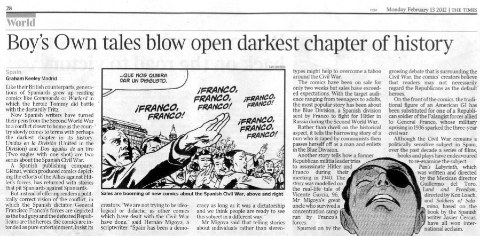
Sweden
Selected by Fredrik Strömberg, a journalist, author, curator and historian. He is one of the editors of Bild & Bubbla, Scandinavia’s largest as well as the world’s second oldest magazine about comics, and President of the Swedish Comics Association. He heads the Comic Art School of Sweden, is the editor of Scandinavian Journal of Comic Art and writes regularly on www.sekventiellt.se. Among the books he has written are the English language Swedish Comics History, Black Images in the Comics, The Comics Go to Hell and Comic Art Propaganda. Strömberg lives in Sweden and is currently working on a number of new books about comics including the forthcoming Jewish Images in the Comics.
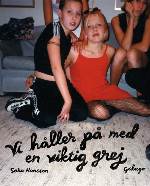
Vi håller på med en viktig grej
[We’re doing something important]
by Sara Hansson
Galago
Here’s something new, something different in the Swedish comics culture. A graphic novel about growing up, about being in that intermediate and oh so troublesome age between child and grown-up - but without all that tiresome whining that so often permeates this genre and gives it a feeling of sulking, revenge-driven angst. Instead, Sara Hansson ‘tells it like it is’, giving us an insight into the mind of the child she was and the world she lived in, with a story that is so endearing and has such a good reading flow, that you get all engaged in it and speed through, afterwards regretting your hastiness and going back for another read - which is just as fulfilling. The story is easy enough to encapsulate: Sara is an eleven-year old girl without any best friend, and divorced parents, trying to figure out who she is and finding the answer through the brand new band Spice Girls, and Rebecka, a one-year older girl in her school who becomes her best friend. That’s the story on the surface. Underneath there’s much more going on, as Hansson beautifully captures all the quirks of being the child of divorced parents, of starting to realising that you can rebel against your parents, but not really being sure if you want to, and so on. But where this book really excels is in the description of being best friends. The ending is pure visual magic, as the two girls run around in the rainy dark, shouting “We are the ones who decide!”, recreating the feel of the very first Spice Girls video.

Tummelisa: eller Den andra vildmarken
[Thumbelina: or The Other Wilderness]
by Matilda Ruta
Kolik forlag
Another really interesting debutant from 2011 was Matilda Ruta with her graphic novel Thumbelina: or The Other Wilderness. This is a modern take on the 19th century fairy-tale, with a decidedly feminist slant, transforming the pretty girl object of the story into a self-reliant, go-getting subject. Add to this the beautiful watercolour paintings that flow easily in and out of the traditional comics format and you have an engrossing and thoughtprovoking graphic novel.
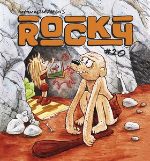
Rocky 20 & 21
by Martin Kellerman
Kartago
For someone living outside of Sweden, it might be hard to understand how popular Rocky by Martin Kellerman is, but suffice to say that after more than a decade, it is still one of the best-selling comics out there, with strips in most Swedish daily newspapers, a comics magazine of its own and a steady flow of collections that just keep selling. Fantagraphics tried to tap into this with English editions, but there is something so inherently Swedish about Rocky, that this was probably doomed from the start. For me, Rocky still, after all these years, gives me a great reader’s experience and I look forward to each new collection. The books that were published during 2011 were especially enjoyable, as this grouch finally fell head over heals in love; a story we never thought we would read. Good solid storytelling, and a usage of the strip format that I haven’t seen in many other comics around the world.
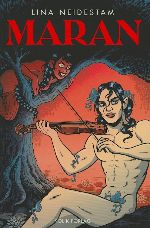
Maran
[The Mare]
by Lina Neidestam
Kolik
This is another first for Swedish comics: a raunchy, realistically drawn story, partly based on Swedish folklore, containing some really graphic sex, though always from a female perspective. Neidestam lets her protagonist, a young writer, settle into a cottage in the woods in order to be free to write, only to be set upon by horny locals, sex dreams based on old fairy tales, and so on. Beautiful images and a great read that thoroughly affirms female lust as a valid point of departure for a comics story.
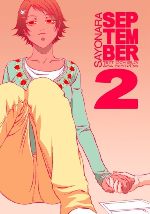
Sayonara September 2
by Åsa Ekström
Åsa Ekström, one of the most successful Swedish artists drawing in a manga-inspired style, released her second volume of her magnum opus Sayonara September, and she just keeps getting better. This is clearly inspired by Japanese comics, not only in the way they are drawn but also in the storytelling, the way characters are introduced and related to each other and so on - and still it is very Swedish. This is the story of a young female artist starting at a comics art school, her ambitions, her loves and so on - a traditional coming-of-age story in one sense, but again, coupled with an Asian way of telling stories. This is how I want artists outside of Japan, and making comics inspired by manga, should work by keeping the inspiration but telling stories that are relevant for themselves and their readers, not trying to create copies of Japanese comics.
Posted: February 11, 2012











